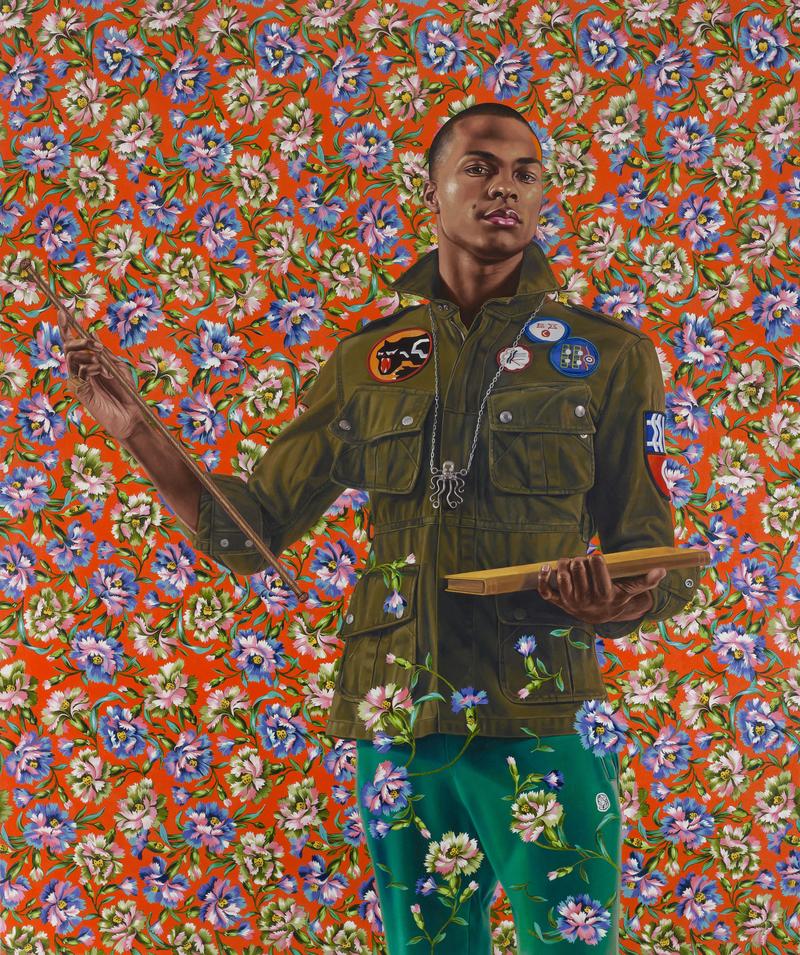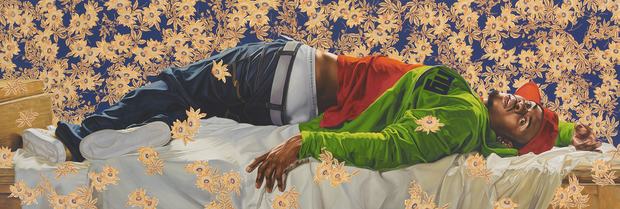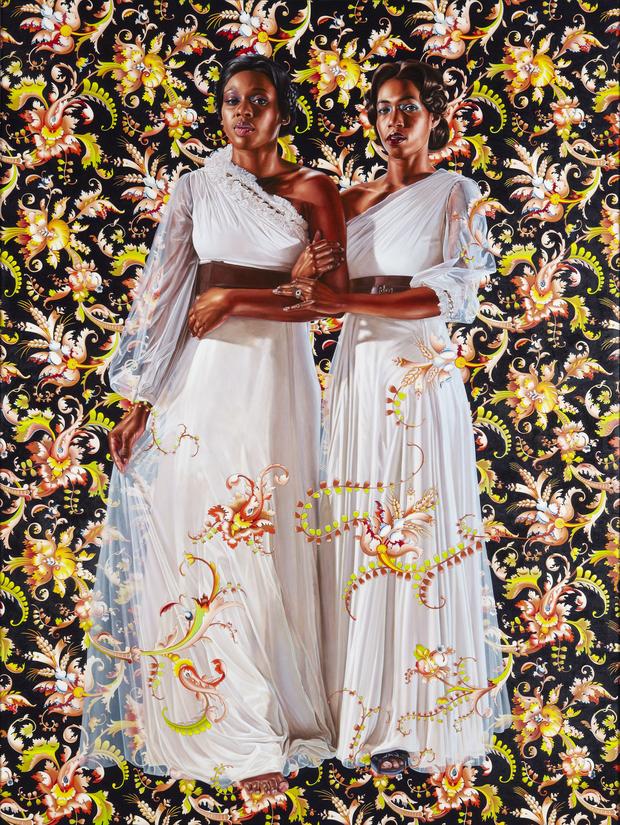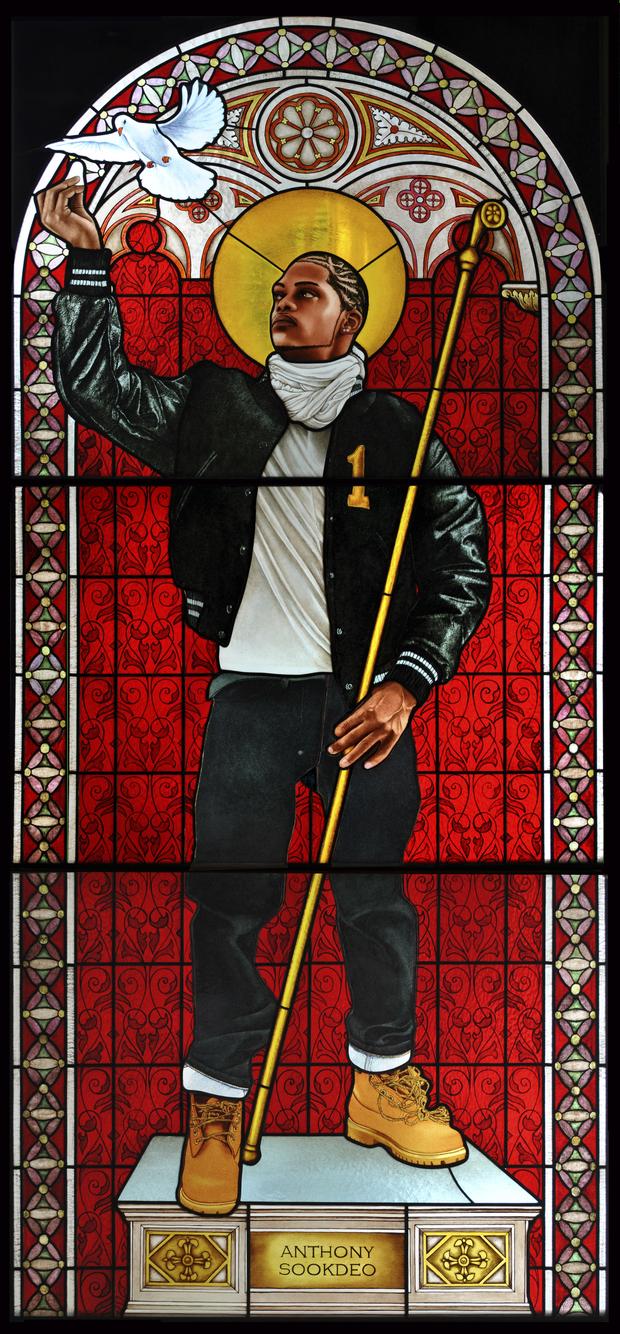
When Lucious Lyon, the hip-hop impresario played by Terrence Howard in Fox’s “Empire,” holds meetings in his conference room, a colorful painting of a shirtless black man looms in the background.
It’s a piece by American artist Kehinde Wiley, whose work is the subject of a new retrospective at the Brooklyn Museum.
“Kehinde Wiley: A New Republic” is the first museum survey of the artist’s career, and it features about 60 pieces, including paintings, sculptures and works in stained glass.
Deborah Solomon, WNYC’s art critic, said Wiley’s work is about race and power, and he often presents African-American men in classical European paintings.
“Kehinde Wiley is famously re-dressing the absence of blacks in art history by creating a pantheon of beautiful black men who now gaze out at us from the walls of the Brooklyn Museum,” she said.
Wiley, 37, grew up in South-Central Los Angeles and was a teenager when the Rodney King riots happened, following the acquittal of four white police officers who beat King.
Solomon said even though Wiley ended up going to graduate school at Yale, his childhood had a big impact in his work. She explained Wiley describes himself as half African-American, half-Nigerian and gay. That’s why he focuses mostly on the male figure, which is not common in art history. “Most great painters were painting the female body,” she said.
Wiley did start painting women in 2010 following the advice of his gallerist Sean Kelly, said Solomon, and a few of those pieces are in the show as well.
The exhibit also features paintings from his World Stage series. Initiated in China in 2006, it portrays everyday lives of people in Brazil, India, Sri Lanka and Nigeria, among other countries.
Solomon said Wiley’s work is worthy of a closer look. “He came up with a kind of imagery that is instantly recognizable,” said Solomon. “I think the question now is where he can take it from here.”
The exhibit is on view until May 24.



